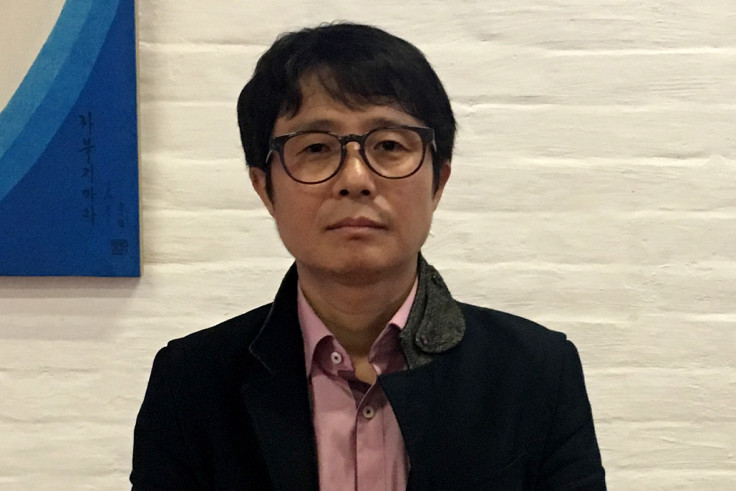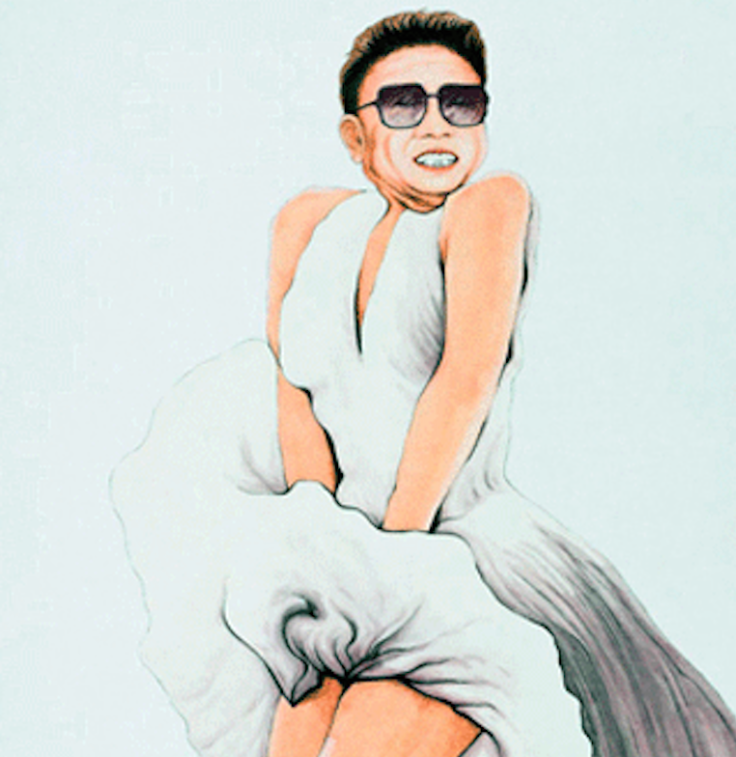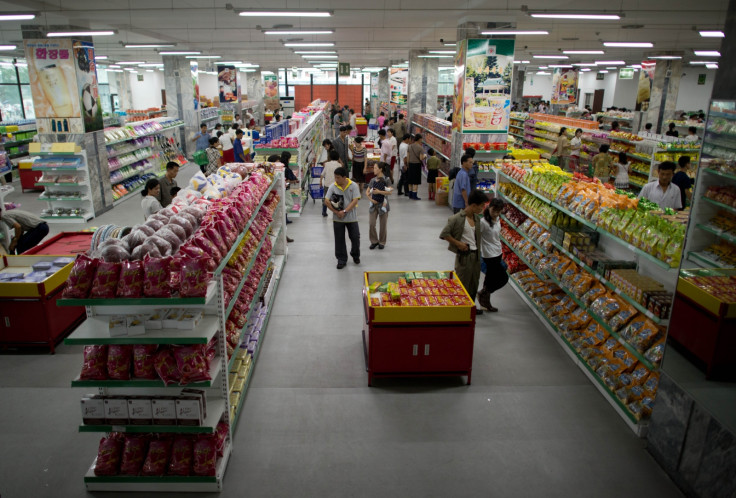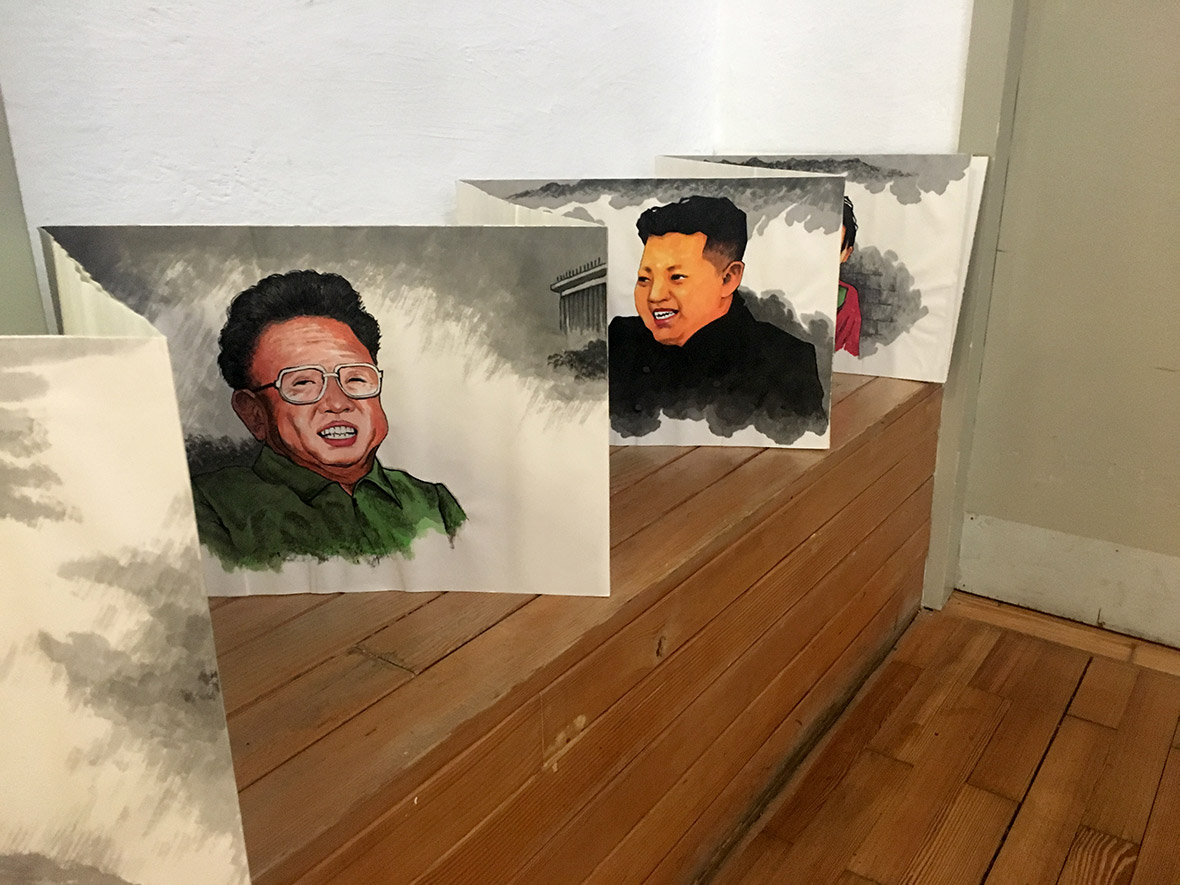The story of Kim Jong-il's propaganda artist – and how he escaped death to mock North Korea
Artist Song Byeok on his former life working for the North Korean government – before his escape.

One of Song Byeok's most recognisable paintings is his depiction of Marilyn Monroe in her iconic dress. Where Monroe's head should be is the face of the late North Korean despot Kim Jong-il.
This kind of artistic satire was once unthinkable for North Korean dissident Song. Under Kim Jong-il's totalitarian regime, he was recruited by the government to paint propaganda pictures. Since fleeing North Korea to escape starvation, Song now creates satirical images of the Dear Leader and the North Korean regime as a dissident.
His work is now being shown for the first time in the UK at Amnesty International's offices in east London.
"Every North Korean citizen lived and worked before Kim Jong-il and Kim Il-sung," he tells IBTimes UK, via a translator.
"I was a painter, making signs containing propaganda. The content of my paintings was mostly anti-America, a celebration of government, and scenes of people working for the state."
Song's journey to working for the North Korean government began when he was a child. A government official spotted his work and was impressed – he recognised the boy would have a future with the Workers' Party.
He was drafted in to serve as an official propaganda painter for the regime at the age of 24. Each day, an official would tell him what to paint. His work had to be precise and exactly what the party wanted, or he would face repercussions.
Propaganda
Images are a vital tool in North Korea's vast propaganda regime, working to promote Juche – North Korea's state ideology of self-reliance.

"People believe it," Song says. "They believe North Korea is the best country in the world. That North Korea has the greatest population.
"They believe they are the happiest population in the world – and that it's possible because they have three generations of dictators: Kim il-Sung, Kim Jong-il and Kim Jong-un."
When Kim Jong-il died in 2011, the internet was flooded with images of citizens crying and wailing in the streets of Pyongyang. These tears, Song says, were genuine.
"North Korean people believed Kim Jong-il was like a god," he says. But despite working for Kim, Song never met him in person.
"Ordinary people like me didn't get the opportunity to meet him in person. He was just like a god, so we weren't even allowed to see his shadow," Song adds. "We could only see things through television, through newspapers."
"People believe North Korea is the best country in the world. They believe they are the happiest population in the world."
Starvation
Life as Song knew it changed in the mid-1990s, when North Korea was in the grips of the Great Famine caused by its despotic leader, dysfunctional government, fractured economy and agricultural decline. Nobody knows exactly how many people died, but up to three million people are thought to have perished – including Song's mother and sister.
"So many people died because of starvation. I strongly believe more people died than were officially announced," Song says, shaking his head. "The party used to collect grains to distribute among workers and people, but in 1995, they suddenly stopped distributing food and commodities to people.

"People started travelling to mountains to find food to eat. Even my family started to eat leaves and bark from trees. People aren't animals – they are human beings. We can't live off leaves from trees. I saw so many of my neighbours dying. The most sad thing is dying because of starvation."
Facing death, Song decided to flee his country. "Of course I left because of starvation," Song says. "I saw a lot of people die because of starvation and my family members started to die one by one. So I decided to escape from North Korea."
Escape
Song and his father attempted to swim across a river to China, but his father drowned. "I was captured," he says. He was sent to one of North Korea's prisons.
"I cannot describe the life in prison," Song says. "It started by being tortured. They asked me whether I tried to escape from North Korea to meet American or Korean pastors. Then they started to torture me by using a piece of wood, which they put behind my knee, and pressed my legs down so I would confess why I decided to escape North Korea. And when they realised I was innocent, I was sent from the prison to a labour camp."
Sick and starving, Song was close to death in the camp – but by a stroke of luck, he was released. "The officials in the camp were fed up of getting rid of the dead bodies, so they let me go home to die there," he says.
After returning home, Song began to recover. "I was getting better. I started to wonder what life was like outside of North Korea – I wanted to experience that."
Art






He eventually escaped by crossing the border into China. He reached the safety of South Korea's capital Seoul in 2002, where he still resides today.
Once outside of North Korea, Song decided to pick up a paintbrush once again, but this time, instead of painting propaganda, he decided to satirise what he had witnessed at first hand in his home country. He promotes freedom, using acrylics to satirise repressive regimes around the world.
A far cry from creating propaganda, Song's work now includes images of Kim Jong-un wearing America's stars and stripes – and North Korean children eating western sweets underneath a North Korean flag.
"I receive a lot of threats," Song says. "They don't like that I am making fun of three generations of Kim," he says. But his message is clear.
"I am North Korean – and I want to help the North Korean population with my work," Song explains. "I believe human beings should have freedom of expression, and religion, and so on. So I want to ask British people to release North Korean people from the regime and let them know what freedom is. I represent the reality of North Korea."
© Copyright IBTimes 2025. All rights reserved.






















